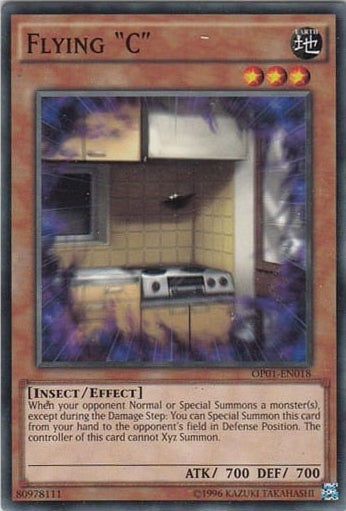Note that all of the bytearray methods in this section do not operate in place, and instead produce new objects. The following methods on bytes and bytearray objects assume the use of ASCII compatible binary formats and should not be applied to arbitrary binary data. In modular arithmetic, the set of available numbers is restricted to a finite subset of the integers, and addition "wraps around" when reaching a certain value, called the modulus. For example, the set of integers modulo 12 has twelve elements; it inherits an addition operation from the integers that is central to musical set theory.
The set of integers modulo 2 has just two elements; the addition operation it inherits is known in Boolean logic as the "exclusive or" function. A similar "wrap around" operation arises in geometry, where the sum of two angle measures is often taken to be their sum as real numbers modulo 2π. This amounts to an addition operation on the circle, which in turn generalizes to addition operations on many-dimensional tori. The addition of two numbers is an arithmetic operation of adding the two numbers and storing the output in a vector. The input values can be pre-defined or can be user-defined.
The addition operation can be done on a single number or a list of input values. Sum () is the function used for performing the operation. This recipe performs the addition of two numbers using the + as well as the sum () function.. ¶Return a bytes or bytearray object which is the concatenation of the binary data sequences in iterable. A TypeError will be raised if there are any values in iterable that are not bytes-like objects, including str objects.
The separator between elements is the contents of the bytes or bytearray object providing this method. Both bytes and bytearray objects support the commonsequence operations. They interoperate not just with operands of the same type, but with any bytes-like object.
Due to this flexibility, they can be freely mixed in operations without causing errors. However, the return type of the result may depend on the order of operands. Here we call user defined function add from within printf() function.
We pass 2 integer variables as argument to add method. The values of variable a and b are copied to variable x and y. Note that values of variable x and y are local to function add and main function do not know values of x and y. X and y are separate copy and altering which do not alter the value of variables a and b. To read the input numbers we are using scanf() function and then we are using printf() function to display the sum of these numbers. The %d used in scanf() and printf() functions is the format specifier which is used for int data types in C programming.
The following methods on bytes and bytearray objects can be used with arbitrary binary data. As bytearray objects are mutable, they support themutable sequence operations in addition to the common bytes and bytearray operations described in Bytes and Bytearray Operations. The second program in this post is using three user-defined functions input(), addition(), display(). The input() function doesn't take any argument and returns one float value. And addition() function takes two floating-point values as argument and return sum value .
Similarly, the display() function takes three arguments but return nothing. The core built-in types for manipulating binary data are bytes andbytearray. They are supported by memoryview which uses the buffer protocol to access the memory of other binary objects without needing to make a copy. The addition() function takes two arguments because it will add two numbers. To add two numbers, first of all, numbers should be passed to the addition() function.
The addition() function takes two arguments, store it in parameter variables, calculate the sum of both numbers and returned results to the main function. In this program, one function addition is defined which takes two floating-point number arguments and also returns floating-point value. In the main, two floating-point numbers are taken from the user and stored in the floating-point variables number1 and number2 respectively. In the below program to add two numbers, the user is first asked to enter two numbers and the input is scanned using the scanf() function and stored in the variablesand. Then, the variablesandare added using the arithmetic operatorand the result is stored in the variable sum. One-dimensional memoryviews can be indexed with an integer or a one-integer tuple.
Multi-dimensional memoryviews can be indexed with tuples of exactly ndim integers where ndim is the number of dimensions. Zero-dimensional memoryviews can be indexed with the empty tuple. A memoryview has the notion of an element, which is the atomic memory unit handled by the originating object. For many simple types such as bytes and bytearray, an element is a single byte, but other types such as array.array may have bigger elements. Some bytes and bytearray operations assume the use of ASCII compatible binary formats, and hence should be avoided when working with arbitrary binary data.
Bytes objects are immutable sequences of single bytes. Addition belongs to arithmetic, a branch of mathematics. In algebra, another area of mathematics, addition can also be performed on abstract objects such as vectors, matrices, subspaces and subgroups. In this program, three user-defined functions are used. The input() function, which takes no arguments from the main method, takes input from the user and returned this value to the main function. We will write two programs to find the sum of two integer numbers entered by user.
In the first program, the user is asked to enter two integer numbers and then program displays the sum of these numbers. In the second C program we are doing the same thing using user defined function. For non-contiguous arrays the result is equal to the flattened list representation with all elements converted to bytes. Tobytes()supports all format strings, including those that are not instruct module syntax. If the separator is not found, return a 3-tuple containing two empty bytes or bytearray objects, followed by a copy of the original sequence. If the separator is not found, return a 3-tuple containing a copy of the original sequence, followed by two empty bytes or bytearray objects.
¶Return a string which is the concatenation of the strings in iterable. A TypeError will be raised if there are any non-string values initerable, including bytes objects. The separator between elements is the string providing this method. Here we will write a C program for addition of two numbers using functions. First, we will write a program that has only one user-defined function.
Later we will solve the same problem using three functions. The 2nd program teaches you how to write different types of function based on program requirements. Compared to the overhead of setting up the runtime context, the overhead of a single class dictionary lookup is negligible.
Otherwise, the bytes object underlying the buffer object is obtained before callingbytes.decode(). See Binary Sequence Types — bytes, bytearray, memoryview andBuffer Protocol for information on buffer objects. The latter function is implicitly used when an object is written by the print() function. There are many binary operations that can be viewed as generalizations of the addition operation on the real numbers. The field of abstract algebra is centrally concerned with such generalized operations, and they also appear in set theory and category theory. Once that task is done, all the properties of real addition follow immediately from the properties of rational numbers.
Furthermore, the other arithmetic operations, including multiplication, have straightforward, analogous definitions. As we know natural numbers contain all the positive numbers starting from 1, 2, 3, to n numbers or infinity. For example, suppose when we calculate the sum of the first 25 numbers. That means we start adding the numbers from 1 to the given number 25, and the process is called the sum of the first N natural number. In this topic, we will learn how to find the sum of first n numbers using a C program.
The above program is crystal clear, we used function to add two numbers without using addition operator. We got two numbers from our user in a variable num1 and num2. If it's a non-zero number, then execute the statement following else. The addition of two numbers in C language is the arithmetic operation of adding them and printing their sum on the screen. For example, if the input is 5 and 6, the output is 11. The above function takes in a function - fn, and optionally totalArgs that are mandatory before calling fn.
One could also design the function to return resultant summation when the function is called with no arguments. If argument is passed, it will keep adding those numbers to previous result. A programming language is said to have First-class functions when functions in that language are treated like any other variable. For example, in such a language, a function can be passed as an argument to other functions, can be returned by another function and can be assigned as a value to a variable.
Format¶A string containing the format for each element in the view. A memoryview can be created from exporters with arbitrary format strings, but some methods (e.g. tolist()) are restricted to native single element formats. Built-in objects that support the buffer protocol include bytes and bytearray. If format requires a single argument, values may be a single non-tuple object. 5 Otherwise, values must be a tuple with exactly the number of items specified by the format bytes object, or a single mapping object . If you want to make the hex string easier to read, you can specify a single character separator sep parameter to include in the output.
A second optional bytes_per_sepparameter controls the spacing. Positive values calculate the separator position from the right, negative values from the left. Class and its methods, seeText Sequence Type — str and the String Methods section below.
To output formatted strings, see the Formatted string literals and Format String Syntaxsections. In addition, see the Text Processing Services section. The object is required to support the iterator protocol described below. If a container supports different types of iteration, additional methods can be provided to specifically request iterators for those iteration types.
Two methods support conversion to and from hexadecimal strings. Since Python's floats are stored internally as binary numbers, converting a float to or from adecimal string usually involves a small rounding error. In contrast, hexadecimal strings allow exact representation and specification of floating-point numbers. This can be useful when debugging, and in numerical work. Convolution is used to add two independent random variables defined by distribution functions. Its usual definition combines integration, subtraction, and multiplication.
In general, convolution is useful as a kind of domain-side addition; by contrast, vector addition is a kind of range-side addition. On a computer, if the result of an addition is too large to store, an arithmetic overflow occurs, resulting in an incorrect answer. Unanticipated arithmetic overflow is a fairly common cause of program errors.
Such overflow bugs may be hard to discover and diagnose because they may manifest themselves only for very large input data sets, which are less likely to be used in validation tests. The Year 2000 problem was a series of bugs where overflow errors occurred due to use of a 2-digit format for years. In this video tutorial lets learn how to add two integer numbers using functions in C programming language.
Python defines several context managers to support easy thread synchronisation, prompt closure of files or other objects, and simpler manipulation of the active decimal arithmetic context. The specific types are not treated specially beyond their implementation of the context management protocol. If keyword arguments are given, the keyword arguments and their values are added to the dictionary created from the positional argument. If a key being added is already present, the value from the keyword argument replaces the value from the positional argument.
For higher dimensions, the length is equal to the length of the nested list representation of the view. The itemsize attribute will give you the number of bytes in a single element. ¶Return a titlecased version of the binary sequence where words start with an uppercase ASCII character and the remaining characters are lowercase. The array module supports efficient storage of basic data types like 32-bit integers and IEEE754 double-precision floating values. Hex subtraction can be computed much the same way as hex addition; by performing the operation while converting between hex and decimal values. The most significant difference between hex and decimal subtraction involves borrowing.
When borrowing in hex, the "1" that is borrowed represents 16decimal rather than 10decimal. This is because the column that is being borrowed from is 16 times larger than the borrowing column . As long as this is noted, and conversions of the letter numerals A-F are done carefully, hex subtraction is not any more difficult than decimal subtraction. Work through the example, and refer to the text below it for further details.
Hex addition follows the same rules as decimal addition with the only difference being the added numerals A, B, C, D, E, and F. It may be convenient to have the decimal equivalent values of A through F handy when performing hex operations if the values have not yet been committed to memory. A far-reaching generalization of addition of natural numbers is the addition of ordinal numbers and cardinal numbers in set theory.
These give two different generalizations of addition of natural numbers to the transfinite. Unlike most addition operations, addition of ordinal numbers is not commutative. Addition of cardinal numbers, however, is a commutative operation closely related to the disjoint union operation. So, to take two inputs from the user, we need to call input() function two times.
The first call of input() returns first value which will be stored in variable number1 inside main function. Similarly, the returned value from the 2nd call stored in variable number2. An object's type is accessed by the built-in function type(). The standard module types defines names for all standard built-in types.






























No comments:
Post a Comment
Note: Only a member of this blog may post a comment.